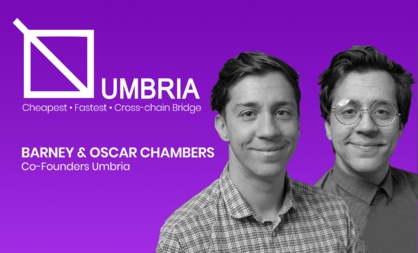Interview | Barney & Oscar Chambers, Co-founders Umbria Network
07/09/2022
Umbria’s Narni bridge is facilitating the fastest and most cost-effective transactions right now.
So, what is a blockchain bridge?
A blockchain bridge connects different and otherwise incompatible networks allowing assets such as tokens and coins to be transferred between different chains/networks for example Ethereum and Polygon or Ethereum and Avalanche (and vice versa). Although the protocols, rules and governance structures on chains may differ, a bridge allows them to safely interoperate.
Where does Umbria fit in? What problem is Umbria trying to solve?
Developers have been increasingly moving away from the Ethereum Network for their dApps. Instead, they’ve been utilising other chains and Layer 2s – networks built on top of other blockchains – as transactions on these networks are far more efficient in terms of cost and speed. There are problems though when bridging assets: traditional validator-driven mint/burn, lock/unlock bridges are expensive for transferring funds between chains, which mitigates the cost savings of alternative networks.
Enter Umbria! Our Narni bridge vastly improves the user experience; it’s easy-to-use and enables the cheapest and fastest asset transfer between Ethereum Mainnet and a host of EVM compatible chains (EVM non-compatible also in the pipeline).
Anyone can freely move their assets cheaply and quickly with the reassurance of one-to-one human support via our Discord should they need it during the bridging process. This has led to Narni’s adoption by many NFT, GameFi and DeFi platforms and a multitude of partnerships in the space.
What differentiates the Narni Bridge?
By using a novel liquidity-provision protocol, Narni enables users to transfer crypto funds between chains at fractional cost compared with traditional validator-driven bridges. This helps projects built on the likes of Polygon, Avalanche, Arbitrum, Optimism, Fantom, BNB etc to onboard communities quickly and easily.
To facilitate bridging, we have numerous staking pools on different chains. Those lending a single asset to the bridge such as ETH, USDC, USDT, MATIC, WBTC – on a single network — earn 40% of the bridging fee whenever someone bridges that asset to that network (they earn in the asset staked). Those staking our governance token UMBR earn even more and get 60% of all fees generated by the bridge, paid every minute in all the assets we support. Our liquidity pools are also pretty compelling for stable coins, which traditionally don’t earn much in the way of fees.
Can you explain what the Narni Bridge Widget is?
We’re proliferating access to the cheapest, fastest bridging with our Bridge Widget V2. This widget can be integrated very easily into a project’s platform/website as a simple iframe meaning anyone can easily bring the functionality and seamless bridging experience of Narni to their community. Additionally, Umbria’s referral program offers a 0.1% fee for referrers for every bridge transaction completed using the widget. Ultimately we’re providing on a large scale the accessibility that’s required for mainstream adoption of crypto. You can find out more about integrating the widget here.
So what’s Umbria’s prime objective going forward?
Our prime objective is to be the fastest and cheapest bridge that connects to the most blockchains – we want to be truly blockchain agnostic and the main hub for cross-chain transactions. Improving the user experience is key for the crypto industry to grow and see mainstream adoption. This is what we’re driving.
How does the project make money?
The Umbria DAO stakes a portion of its pre-minted tokens in the bridge to fund development. The DAO generates revenue as a function of bridging volume. As bridge volume increases, and more chains are added UMBR stakers earn a greater volume of fees. $UMBR stakers earn their share of a 0.3% fee whenever anyone transfers any of the assets supported by the bridge cross-chain.
Anything else we should know?
Quite a few things, but here are three:
Umbria Network has Online Blockchain plc – a UK listed company as its administrator, co-ordinator and adviser. This provides a level of transparency that’s rare in the crypto space.
Our DAO, which has UMBR as its governance token, is being developed progressively. We want to give the informed community as much power as possible to collaborate in the building/development of the best products and services for the Umbria ecosystem and ultimately drive the project’s Narni bridge to become the ultimate cross-chain bridging solution.
The UMBR token can be earned directly by farming UNIv2 UMBR-ETH LP tokens, in the Umbria farm. Liquidity providers receive Univ2 UMBR-ETH LP tokens by providing UMBR and ETH liquidity to the UMBR-ETH trading pair on Uniswap.
Key takeaways
• Umbria’s bridge is realising full frictionless interoperability between a universe of chains
• Umbria is simplifying the over-complicated user experience to make the world of crypto and DeFi more accessible
• The benefits for the user are easy, super-fast and cheap cross-chain transactions
• Platforms/projects such as Layer 2 DEXes can onboard more people easily
• Our cheap and fast bridging means DeFi participants can take advantage of arbitrage opportunities and quickly and easily chase yield on platforms such AAVE and Compound.



